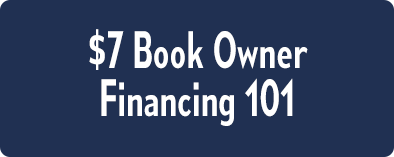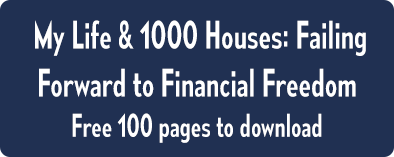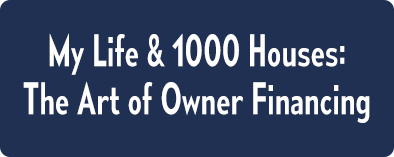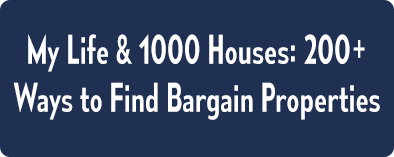PODCAST
Small Assisted Living Goldmine with Emmanuel Guarino
Episode 308: Small Assisted Living Goldmine with Emmanuel Guarino
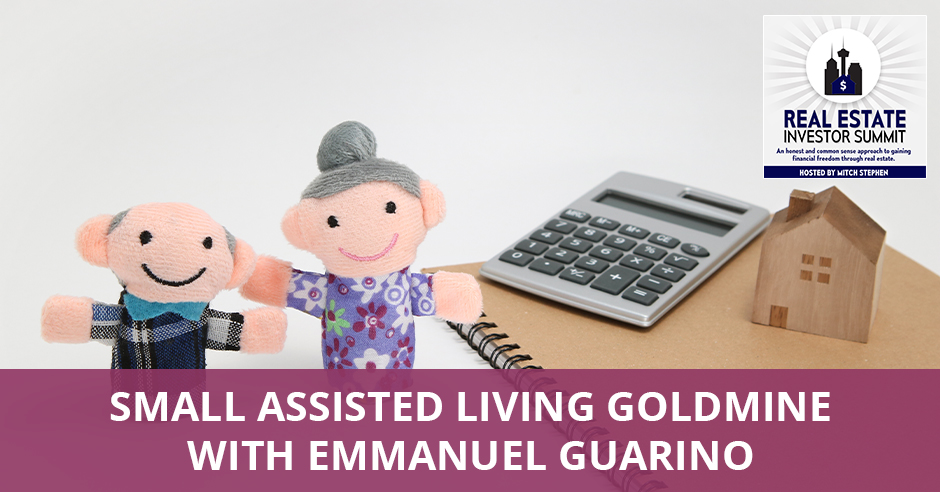
The Baby Boomer population is one market that real estate investors should keep an eye on. With 10,000 of them a day retiring, assisted living has now become a goldmine for many investors. The Baby Boomers are coming in, and this phenomenon is not going to end for a long time. Emmanuel Guarino of The Assisted Living Agents tells us all about this big opportunity we could take advantage of. Emmanuel shares how, at 26 years old, he has managed to own a number of assisted living facilities. Getting down into the nooks and crannies of this industry, he talks about how they take care of the elderly and handles liabilities and lawsuits that might come with it. Don’t miss out on this episode as well as Emmanuel’s special gift just for you!
—
Watch the episode here:
I have Emmanuel Guarino. He is into assisted living. This is a hot topic because our Baby Boomer population is like a basketball coming down a garden hose. It’s a huge demographic. They’re retiring 10,000 a day, which means they’re going to get old and need assisted living by the hoards. It has already started and not going to end for a long time. The Baby Boomer phenomenon happened when all the men came back from war. They were a little bit amorous. Everybody got home on the same day and started making whoopee. A bunch of babies were born and they’re called the Baby Boomers. These Baby Boomers wreak havoc everywhere they go because they’re a huge mass. Whatever they like, you better start producing. Whatever they need, you better get it. They are a huge demographic and they’re getting old. You’re in the right place at the right time, aren’t you, Mr. Emmanuel Guarino?
I think so and I love that. It’s a basketball coming through a garden hose. I don’t think there’s any better way to describe it. That is what we’re dealing with.
It’s going to cause some problems too. There are fewer people in the workforce. We’ve got to support these people that for years, they put in and now it’s our turn to take care of them. There are arguments against that. Some people that are my age or a little bit younger are pissed off saying they didn’t do a very good job in voting because they’ve mortgaged our lives so they need to get their ass out of the assisted living and go back to work and fix it. It’s not going to happen. Tell us a little bit about you. You look very young. How old are you?
I am 26. My birthday is coming so I’ll be 27.
Do you know where my head was when I was 26? It was so far in a dark place. You are 26 and you’re going to tell me you own a billion assisted living. I didn’t find my butt with both hands until I was 36. If I had been hanging around people like you when I was 26, Lord only knows where I would be. What part of the country are you in?
We are in Phoenix, Arizona.
It’s the place where you can fry an egg in your hand.
It’s on the sidewalk and in front of your car. We’ve had many viral videos going off of people baking cookies in the front dashboard of their cars. It is hot.
Here’s the good news. Everything’s got air conditioning. Between the car and the office building, it’s the car and the assisted living space. Did you go to college? Where did you go to college?
I went to Arizona State University. I studied Wellness at that time and a little bit of partying. I had a great time. I was in the Wellness major and I loved that. I wanted to be a physical therapist. In college, I had a job where I took medications from pharmacies to assisted living homes and facilities. There was one day in particular that I remember very clearly. I went out to a large assisted living facility. I walked in. I was looking for the caregiver or the manager to give the medication to and I couldn’t find them. There were a lot of people in that facility, but there weren’t many people working there. I find the person. I’m walking back out to my car. I look over to my right and see a big room. It’s probably a 20×20 room. It’s the REC room. There was one TV on one side of the wall and two people in wheelchairs. Neither of them was facing each other or the TV. One of them was facing the corner. One of them was facing a random wall and it made a very big impact on me. I said, “It’s terrible.” It broke my heart. I went to my car and cried like a baby. I prayed to God and said, “If there’s something that I can do, let it be done.”
I’m very blessed to be able to be a part of a company where we help people learn on how to do this so they can take better care of the elderly, of people who are in a time of their lives who need someone looking out over them. That’s a little bit about me and my background. I officially got into residential assisted living with my family. My father got into this business. My grandmother needed one of these facilities to move into and there weren’t many good ones in upstate New York where she lived. We started building our first one and then started the second and third one. By the time we’d started the second one, people were coming up to us saying, “Why are you doing this? This is interesting stuff. I want to learn more.” That’s how we started teaching on it. That’s a little bit about how we got into the business. On that end, I knew I wanted to be in assisted living. With the real estate side of things, I was handed the purple book. I’m sure many of your readers have read Rich Dad Poor Dad. I read that book. It felt like twenty minutes, reading through that whole thing was awesome.
A couple of weeks after reading that book, I saw Robert Kiyosaki. I was with my father. He walked up to my father and said, “You’re the assisted-living guy. I’ve got some questions for you.” I said, “Robert Kiyosaki is talking to my father. That would make my father my hero.” That’s when it all clicked for me. At that point I said, “Dad, what can I do to help? Give me anything.” He said, “Some of our students need houses for this. Go out there and find homes for our students.” I learned it all on my own. I made plenty of mistakes along the way. That’s one of the ways to learn. Make all the mistakes or learn from other people’s mistakes. I made all the mistakes but I learned what’s good, what’s bad and how to be very efficient in this business. That’s what I specialize in. It’s selling residential assisted living homes as well as teaching on how to do them and owning them.
You learn either from making all the mistakes or from other people’s mistakes. Share on XI went to La Calle U myself. How’s your Spanish?
I don’t know. I live here in Arizona.
La Calle means the street. That’s where I graduated. It’s the best college on the planet, it takes everything you have and more if you mess up. I like the way that you picked it up and learned it. The money looks big on the chart just renting a house looks big until you start figuring out the liabilities and the exposures. The upside is easy to talk about. How do you handle all the liabilities and the potential lawsuits that people think maybe their loved one was mishandled?
One of the best parts about this industry is there are barriers to entry to getting into this industry. We used to get many calls from people who would say, “I own 1,000 apartment units. I want to buy an assisted living.” They would give me a call. I was selling a care home for an example. I would say, “That’s great. I’m glad you have the experience. What do you know about this industry?” They might say, “I don’t know anything, but I want you to show me a bunch of homes.” I would say, “Here’s what I’m going to recommend. You come out to our class and learn how to do it or get a mentor and learn how to do this business before getting into it.” There are barriers to entry. One of them is the liability. Sometimes people say, “This looks good but there’s a liability. What if somebody falls?” What people may not understand is that the reason why someone’s in an assisted living is they need help with their activities of daily living. It’s cooking, cleaning and getting up and out of bed. It’s all of the things that we do on a day-to-day side of things that we don’t think twice about.
One of the reasons why someone moves into an assisted living is usually the children of the residents go home for Thanksgiving and Christmas. They see mom or dad as we did in Upstate New York. We went to visit my grandmother. Grandma has a fall. Grandpa has a fall. We’d go, “If they’re on their own and there’s no one there to help them, that’s a horror story waiting to happen.” We need to make sure they’re in a place where someone can help them in case of an emergency. At that point they say, “Let’s move them into an assisted living.” In a larger assisted living facility, the ratio of caregivers to residents might be one to ten, one to fifteen or one to twenty. That’s a lot of people they have to oversee. In our homes, we do them in residential-style homes. It might be a one to four, one to five or one to six caregiver to resident ratio. We have a much better caregiver to resident ratio than the larger facilities.
Let’s say we have a resident in the home. It’s you and a brother or sister. Mom has been in the home for five years. The national average to live in one of these homes is $4,000 a month. Let’s say mom has been in that home for five years paying $4,000 a month. Let’s say she has a fall. Why is she in the home? She’s at risk to fall. The caregiver goes and helps her up. They go to the hospital. Two months later, they come back and they pass away. This is not a surprise. Mom is 95. She’s been living there for five years paying $4,000 a month. That’s a lot of money. Sometimes people say, “You’ve got to be getting sued left and right and things like that.” It’s not medical malpractice insurance that we need. It’s called professional liability insurance for residential assisted living in a residential group home setting. It’s about $1 a day per resident. It covers them up to about $1 million. You can use that policy up to three times. That’s what we have there, but there’s a difference. When someone has been in the home for that long and they’re at that age, it’s understood.
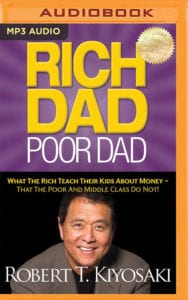
Rich Dad Poor Dad
It’s a lot of money for someone to be living in one of these homes and nobody wants to see their mom or dad move on and things like that. We understand. This is the circle of life. This is how things are. It’s a lot of money. For those readers who have been through that process, it’s hard to talk about but it’s understood. The average is $4,000 a month. For people in our homes, it’s $4,000 to $6,000 a month. Let’s say mom has been in that home for five years paying $6,000 a month. It’s $72,000 times five, that’s close to $350,000. That’s a lot of money. It’s understood that this is a stage of their lives. We have our insurances. That’s what we go over as well. We’re teaching you what insurances you need and you don’t need. The big thing is you’re treating the residents right. We want them to live forever because they’re our customers. We want them in that home forever. We are financially incentivized to have them there forever. We want them there to be happy, healthy and having a great time. I hope that helps answer that a little bit.
There are the downside and the upside. You rent these rooms at a premium, almost any house that fits the quota. Is this a fair statement? Almost any house at fair market value can be a center for that if it’s got what you need. You probably don’t have to buy these houses at a discount, it would be better off if you did. It sounds to me like a fair market price might work if it’s the right place.
I’m sure your readers have had the experience too when they’re finding that deal. They find the right deal and said, “It’s perfect.” They put in the offer and say, “We’ve gotten fifteen offers in this type of range.” What’s nice about what we do is we’re not going after the three, two-home that everybody else is going after. We’re going after bigger homes. We’re going after homes with more bedrooms and bathrooms. It could be on a busy road. It could have power lines going over it. There’s no pool in the backyard. Things where other homeowners will say, “I don’t want those things,” we’re going after them. As a realtor for these types of homes, when I call in on some of these listings, sometimes they’ll be on the market for 300 days. I’ll say, “I want to see that home that you have listed.” They say, “You want to see that home? I mean, you want to see that home. That’s great.”
You don’t have the aesthetic needs or the certain needs as a family who wants to live in a house have. You have the criteria and who cares if there’s no pool and there are high line wires in the backyard?
We’re going after a little bit of a different thing and that is a great benefit to it is we’re not going where the rest of the market is going. It’s a different type of set of criteria that we’re looking for.
Do you ever look at schools and hotels and stuff? Do they ever convert?
Someone is in an assisted living because they need help with their activities of daily living. Share on XSometimes they do. We focus on residential assisted living home. It’s in a home that you’ve probably driven past these thousands of times and you never know it was there. That’s the whole point. It looks like a home. Some people say, “Why wouldn’t somebody want to move in to one of these larger assisted living facilities?” When you think about it, if someone’s in their 80s or 90s and they’ve been living on their own for a number of years and now they move in with 300 strangers, that can be a little bit much emotionally. That’s physically the idea of being in a large facility. It’s having to walk from one side of the building to the other, getting lost possibly. It doesn’t quite fit for what they need.
With what we knew, we have it in a residential-style home. It feels like what they just came from and they might have five to fifteen people living in the home, not hundreds of people. It feels a little bit more comfortable and safer. We usually have a better caregiver to resident ratio. It’s more care, more one-on-one time that the resident is going to have with the staff that’s in the home. That’s our unique selling advantages versus doing it in a larger facility. That can be right for some people. For the majority of people, they want that home-style feel, time and care. That’s what they’re looking for. That’s why we primarily focus on the residential assisted living style map.
How many people are you assisting on any given day?
We have three homes. They’re all licensed for ten residents. We have 30 residents in total.
What does that generate for you annually?
One of our homes is right around $4,000 per resident in the home. If we have ten residents in the home, that home is bringing in $40,000 of gross income. The expenses on that particular home might be $20,000 to $25,000 at the end of the day. If we have a debt service on that home, let’s say it’s around $5,000 so it’s a nicer home. That would still leave us with $10,000 to $15,000 at the end of the month from that one single-family home. That’s what we focus on. Instead of doing a lot of homes, we focus on doing a few homes and doing them right.

Assisted Living Residences: Whatever you do in your life, do it with your whole heart. That’s the only way to be successful at the end of the day.
That’s a good thumbnail sketch for someone wondering where the money is or what the money is like in this business. Thank you for being transparent in sharing. You teach this stuff. Do you have a little giveaway for my audience or something that they can get to know you a little better with?
I do. This is a cool thing that we put out. It’s a seven-part video series. It goes over the assisted living, what it is and how we can help. It gives you a great idea of, “Is this the right industry for me?” We’re giving that out as a free giveaway. If you want to talk to someone, they can always feel free to call in as well. That seven-video series is going to help a lot of your readers to find out if this is the right industry for them. That’s a free gift that we’re giving out to all of your readers.
I want you to go to 1000houses.com/guarino. You’ll get your free seven-part video series and see if this is for you. Tell us a little bit about how you teach. If someone wants to get involved, what is your course or your bootcamp? Tell us about what you’ve got.
We have two main options for your readers. We have a live three-day training and an online home study course. Both of the trainings are great. I’m going to highly recommend you come out to the live three-day training if this is something that you’re very serious about. The online training is excellent. We’re able to get into so much more in the live training. You’re able to see the homes, meet Gene and his entire staff network with the other students. We’re able to dive into questions even deeper in the live training. We’re going to be going over marketing, staffing, licensing, the real estate, how to convert the homes and all of the finances. We’re able to sit down after the class. We go from about 9:00 AM to 5:00 PM. From 5:00 to 11:00, we’re hanging out and having a good time. You can sit down and ask questions, have a drink, smoke a cigar with Gene or whatever you like to do and immerse yourself in this industry. That’s our two main options. I’m going to highly recommend the live three-day training. If you can’t come out for some reason travel-wise, the online home study course is a phenomenal option.
Is this in Phoenix?
It’s going to be in Phoenix, Arizona.
If you want to do good, do well and hope a lot of people make a lot of money. Share on XThere’s something to be said for going out there and putting your hands on it. It’s getting right in the middle of sensing how it all works and being in the middle of it. Try and get there if you can. If you can’t make it, there’s an online course and get going. Do something. Find out if it’s for you. Go to 1000houses.com to learn more. Do you have consults with people to talk about your course?
We have a Discovery Call button online. That’s going to be the best way to speak with someone and they can help you figure out if this is the right opportunity for you.
It’s 1000houses.com/guarino. Everything you need to know will be there, phone numbers, contact numbers and links. Get your free copy of the seven-part video series. Is there anything you want to say to people who are considering the assisted living space as a way to make a living or change their financial future?
It’s a basketball coming through the garden hose. I’ve never heard that and I’m like, “That is so perfect,” because that’s what it is. I appreciate that. I will use that. If you’re looking for an avenue where maybe not everybody else is going in, there are some barriers to entry but good things are worth fighting for. If you want to do well, help a lot of people and make a lot of money, this is a great avenue to go. The biggest thing is whatever you decide to do, go out and make it happen. You’ve got to love what you do. Whatever it is whether it’s wholesaling, fix and flip, storage units or assisted living apartments, it doesn’t matter. Whatever you do in your life, do it with your whole heart. That’s the only way to be successful at the end of the day.
You’ve got to love it. Especially in the beginning, you’re going to have to put in fifteen hours. If it seems like drudgery or work to you, you would never make it through the hours. It’s too many hours. When I first started, I quit my job in March of 1996. Before the end of the year, I bought 45 houses. In the next year, I bought 65 houses. In my third year, I bought 150 houses. I was spending eighteen hours a day sometimes but it didn’t feel like work to me. I was on fire. I was possessed with what I was doing. I was excited about what I was doing. I was getting ahead and taking a step back every now and then because I was getting my education and my nose bloodied at the same time.
I could feel myself growing every day and every minute. I was learning more and more about not just the business I was in but about people and the way things work as opposed to the book or the videos. I was learning how it worked. This is what the guru said, “This is how it works.” This is what happens. Go to the website and take advantage of some free stuff over there. Get ahold of Emmanuel and have a conversation. See if this might be the business. Get yourself down to Phoenix, have a little fun and get some education at the same time. What’s that bootcamp called?
The live training is on sale. It’s usually $5,000 for one to attend. Now, we have it at $2,997. It’s $3,000 for one.
You probably find a way to write that off. Get on and have a good time. Stay an extra day or two, enjoy Phoenix and get educated. If you don’t invest in yourself, who’s going to do it? Who’s going to invest in you? You have to take a little bit of what you’re making and invest in yourself. Even if you don’t go into this business, it won’t be for not. You’ll have stuff that you keep with you forever that you’re going to use in someplace. Get out there and do it. It’s somewhere between $3,000 and $5,000. Go there, click on the links and talk to him. Tell him Mitch Stephen sent you. Maybe he’ll give you some Mitch Stephen perk.
Thank you very much for taking the time to come on, Emmanuel. It’s my pleasure. You’re such a young and energetic guy. It seems like you have your head screwed on straight. I love that you have a higher reason and it’s not just about the money, which makes all the difference in the world to those families where you’re taking care of their parents. I would not want to have my loved ones in a place where God wasn’t part of the formula. Thank you very much.
Thank you, Mitch. The pleasure is all mine.
All those self-help books about How To Win Friends & Influence People and How To Negotiate were all written thousands of years ago. Everyone just copied those natural laws, whether you want to call it the secret. All that stuff was written 2,000 years ago in a little book called the Bible. If you’ll start to notice when you’re reading these self-help books, there is a chapter somewhere in that book that says exactly the same thing. Thanks a lot.
Important Links:
- 1000houses.com/guarino
- 1000houses.com/VAHelp
- 1000houses.com/moat
- 1000houses.com/AOF
- 1000houses.com/Coaching
- Emmanuel Guarino
- Rich Dad Poor Dad
- How To Win Friends & Influence People
- How To Negotiate
About Emmanuel Guarino
 Emmanuel Guarino is the #1 Realtor for Residential Assisted Living in Arizona. He trains entrepreneurs and investors at the Residential Assisted Living Academy in Phoenix, AZ.
Emmanuel Guarino is the #1 Realtor for Residential Assisted Living in Arizona. He trains entrepreneurs and investors at the Residential Assisted Living Academy in Phoenix, AZ.




